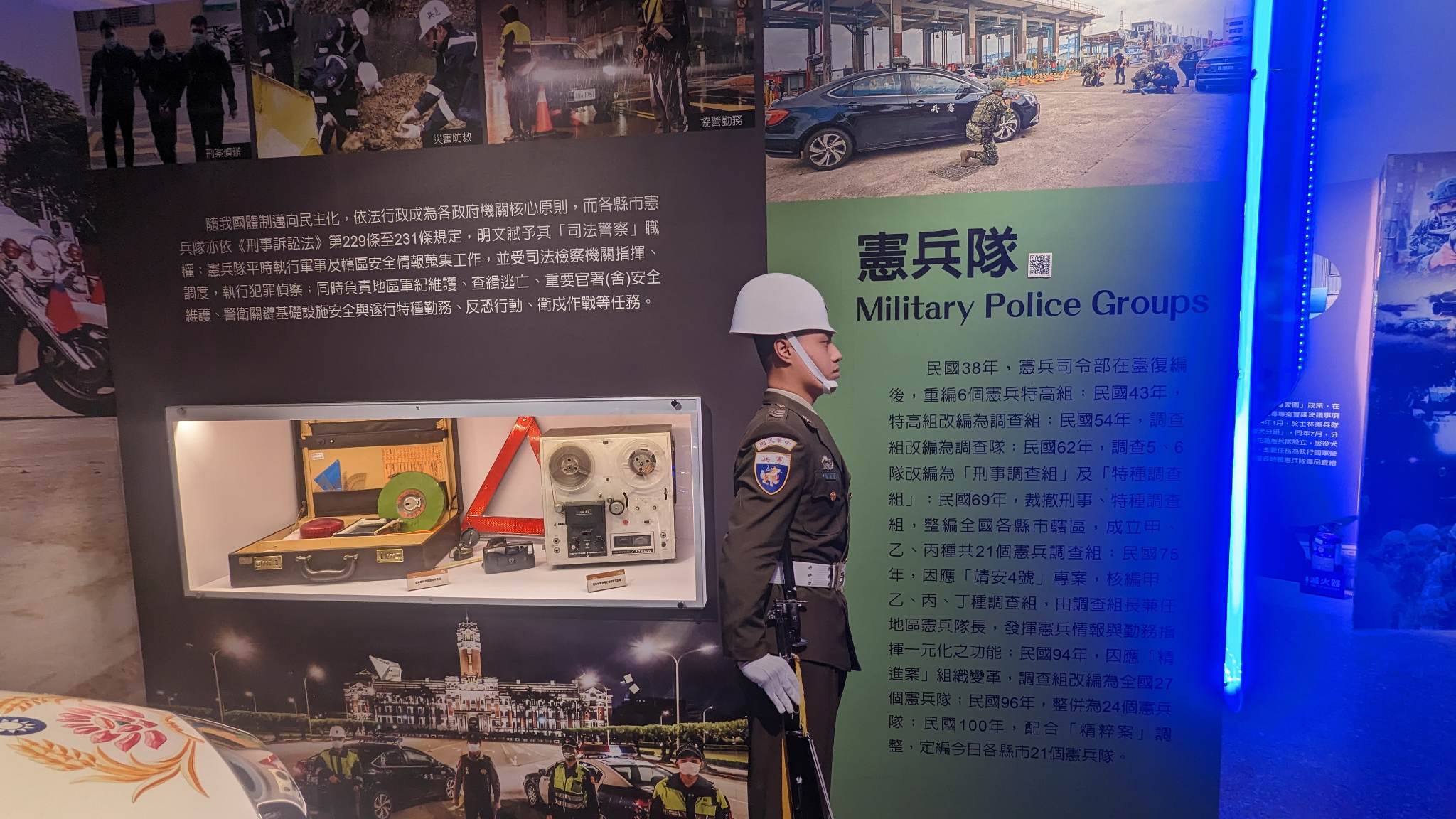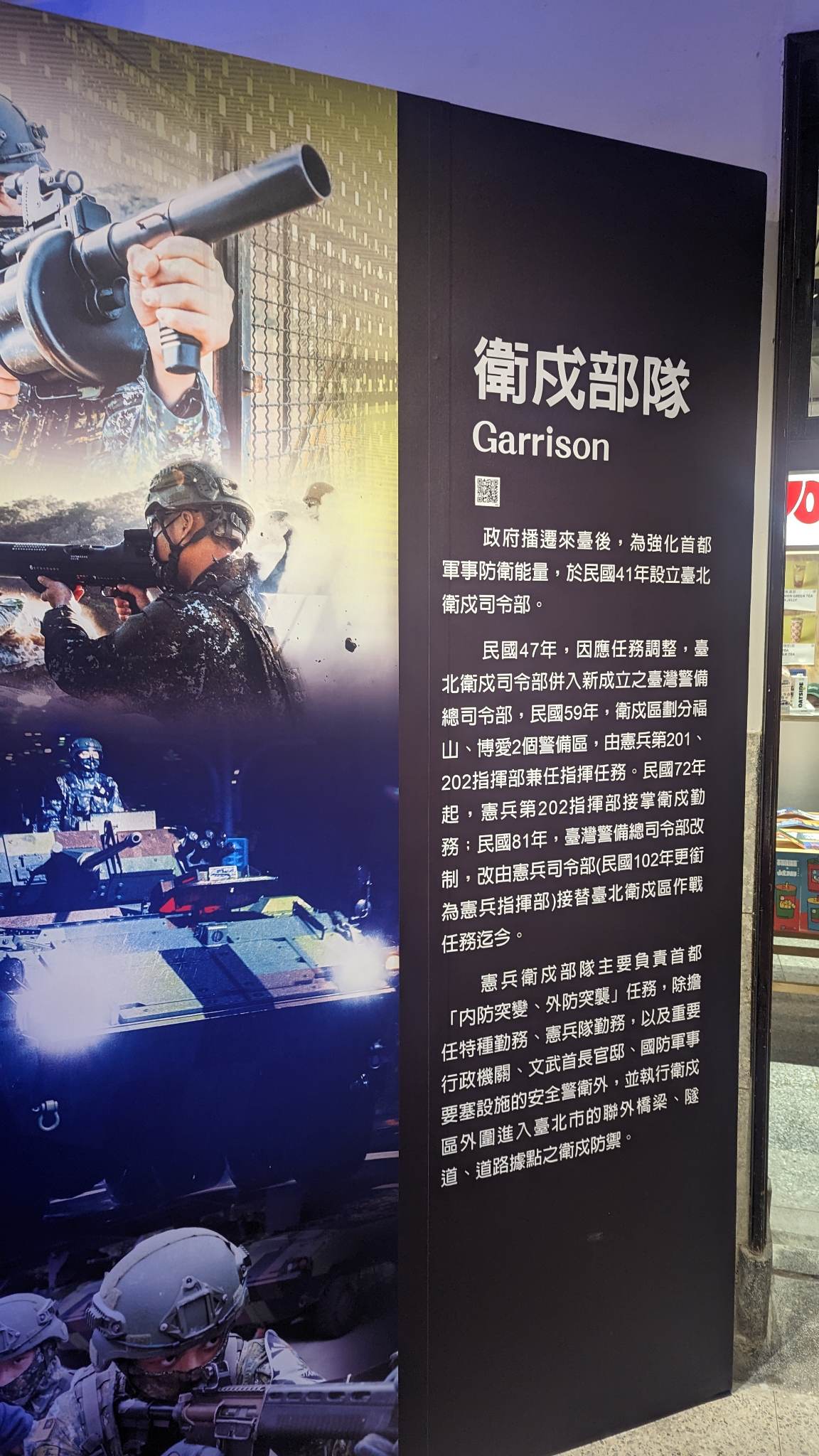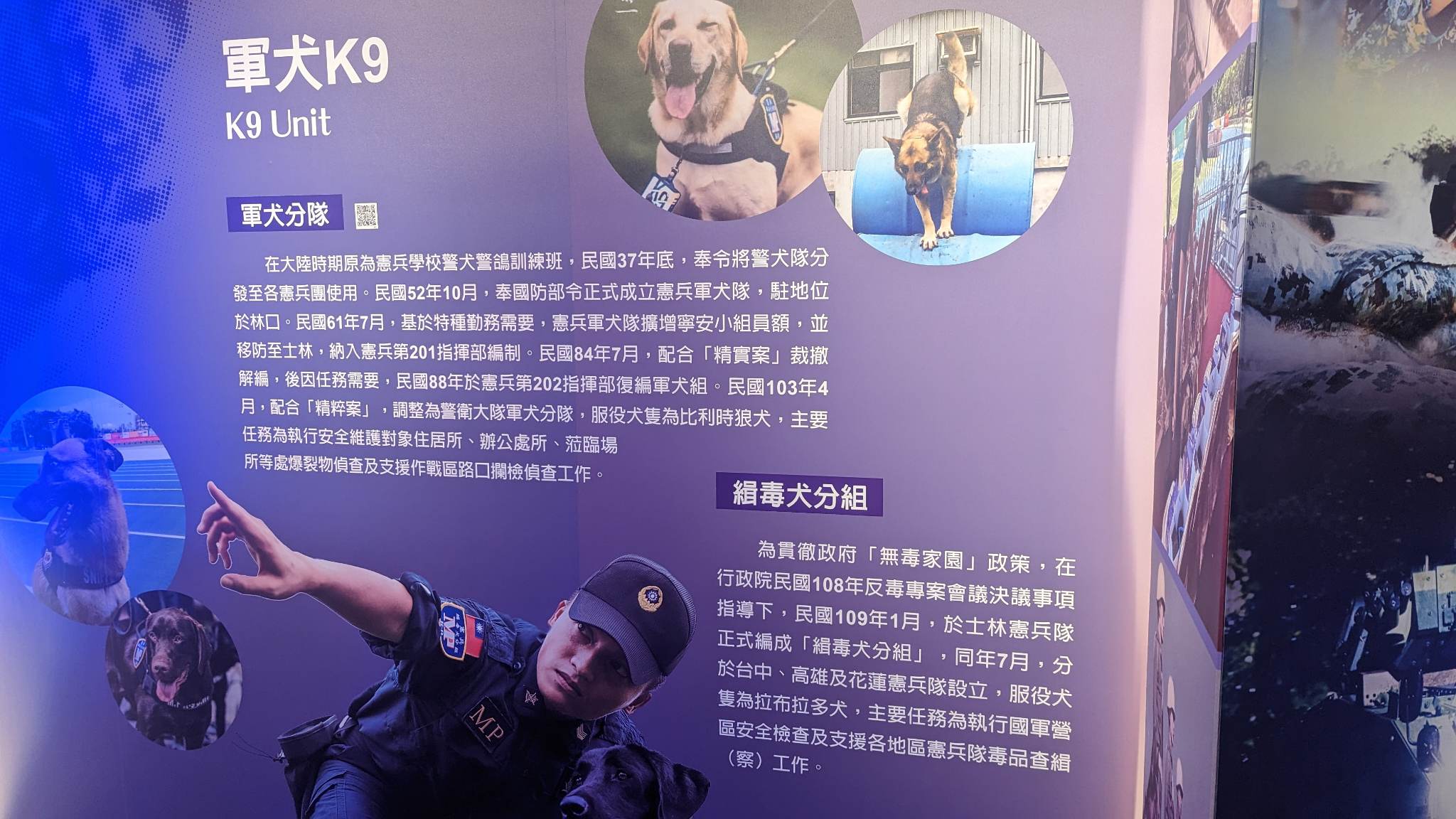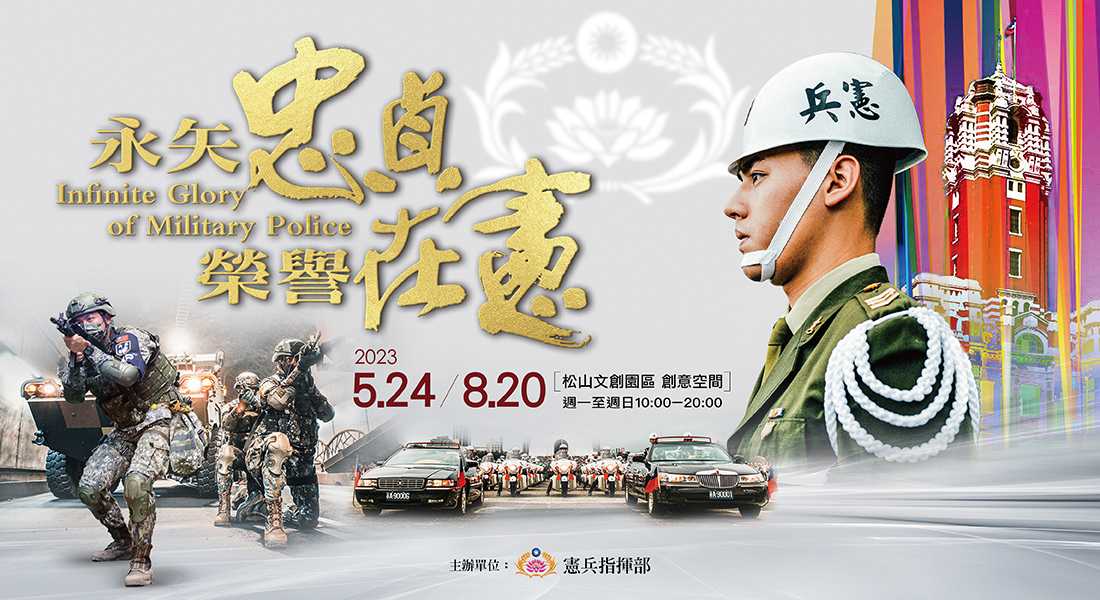by Andy Liu
語言:
English
Photo Credit: Exhibition Poster
Editor: Brandon Kemp
WHILE PASSING BY the Songshan Creative Park, I suddenly froze in my tracks, entranced, hypnotized even, by a poster so brazen and absurd that—for a moment—I thought I was hallucinating it. On it were scrawled the seemingly AI-generated words “The Infinite Glory of the Military Police” (永矢忠貞,榮譽在憲), accompanied—you guessed it—by images of the very same Secret Service-like forces. Today, these figures are most visible in ceremonial functions at national monuments to dead dictators; their fascination and sheer camp appeal might be compared to the Pope’s Swiss Guard or the UK King’s Guard. Before I could drink it all in, a volunteer approached me, gushing about this testament to “Chinese history.”

Photo credit: Andy Liu
“Chinese history”? What the fuck are you on about? I thought. A simple “okay” is all I managed to get out by way of response, but with a smile. Then, as if on cue, a few of the uniform-clad participants walked over, suggesting that I take a picture of myself donning their uniforms. I considered for a minute the prospect of joining in this bizarre Chinese heritage LARPing, especially given how much of my life has been defined by struggles to define Taiwanese identity, grapple with my country’s messy, layered colonial history, and bear witness to the growing pains of a young democracy constantly overshadowed by the looming threat of a Chinese invasion.
“This is the first time we are having an exhibition outside of our own headquarters,” the volunteer continued. Again, I smiled and simply said, “Okay.” There is something nefarious about authoritarian copaganda posturing itself as a fun history lesson in a cultural park. A quick look at the exhibition page reveals that the intention behind this exhibit was to foster a sense of connection between the military and culture, as if these very figures didn’t play a huge part in the suppression of Taiwanese cultural and political expression, at the orders of an unelected Chinese Nationalist government-in-exile.
That’s the big, gaping hole in all this glory really.

Photo credit: Andy Liu
The Republic of China’s military police was dispatched to Taiwan during the suppression of the pre-1949 Taiwanese population in the infamous “228” Massacre and then throughout the ensuing White Terror period. Naturally, 228 was nowhere to be found on the walls of the exhibit, and the only military campaign documented after the 228 Incident was the 1958 Taiwan Strait Crisis.—presumably this is because the Nationalist government loves killing commies but knows killing poor locals doesn’t exactly help their angle.
In fact, every description of military campaigns proclaimed these boys’ bravery for fending off Japanese colonizers (fair enough, though the ensuing Chinese government was every bit as despotic and arguably more corrupt), the CCP, and the Chinese warlords of yore. Despite glossing over the brutal suppression and massacre of Taiwanese people, they still found space to quote fondly the genocidal Chiang Kai-shek’s rousing call to arms.
The rest of the exhibition covered the various functions of the military police, including their rapid reaction company, forensic center, K9 unit, garrison, and counter-terrorism unit. The last of these, known as the Military Police Special Service Company, was created as a response to Israeli agents’ Entebbe raid in Uganda, in which they confronted militant Palestinians who had taken hostage both Israeli and non-Israeli Jewish passengers aboard an Air France flight. The unit was expanded again after 9/11. Taiwan, of course, played no role in either episode, but maybe these brave men wanted in on some of that action. Who knows?

Photo credit: Andy Liu
So, sure, I could criticize the role of the military police in perpetuating a highly fringe, out-of-touch cult of personality around a long-deceased, highly controversial dictator and their glossing over the experiences of those who suffered at that regime’s hands, but why bother? The most laughable part of the exhibit was simply, well, how bad it is. Half-assed interactive elements seem to have been cooked up without much attention to form or content. A tank made from plastic boards sits next to a riot shield, like a child’s last-minute school project. The military police themselves were kind enough to give me an unsolicited personal tour—because I was the only one there. (Side note: I learned that physical appearance is part of their selection criteria. Even people with facial birthmarks aren’t allowed to serve, so if you do want to check it out, you can rest assured that your over-eager tour guides will be easy on the eyes, albeit bland-looking.)
In sum, the Songshan Creative Park’s latest exhibition, “The Infinite Glory of the Military Police,” is a cynical, selective attempt to pass off historical revisionism as fact, perversely aesthesizing authoritarianism at a time when radical honesty and national soul searching are more vital than ever to preserving and expanding hard-won democratic gains. But I, for one, take some comfort in knowing that, if this is the best these nostalgic bootlickers can do, we don’t have much to worry about.



